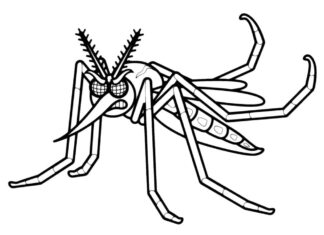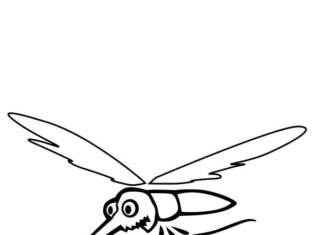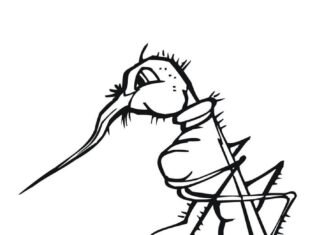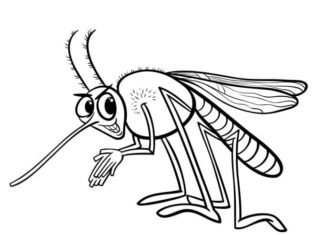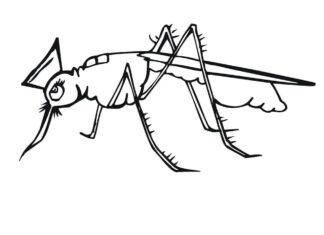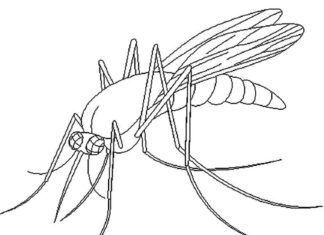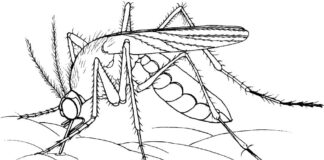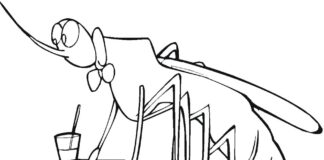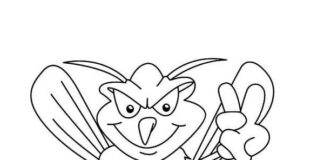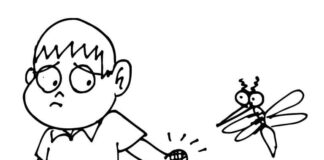Mosquitoes are insects of the order Two-winged (Diptera) and the mosquito family (Culicidae). They are mainly known for their ability to bite and suck blood, but they also perform certain ecological functions in ecosystems.
Mosquito Coloring Book
information
- Anatomy: Mosquitoes have thin bodies from a few to several millimeters long. Characteristic features include long, slender legs and delicate wings that move in a distinctive manner.
- Biting females: These are female mosquitoes that suck blood from vertebrates, including humans. They need the blood to reproduce because it contains the nutrients necessary for their eggs.
- Nutrition: Mosquitoes feed not only on blood; many mosquito species feed on plant juices and nectar. It is the females that need blood as a source of protein for egg production.
- Ecological role: In ecosystems, mosquitoes play a role as a food source for birds, bats and other predators. Aquatic mosquito larvae are also a dietary component for fish and other aquatic organisms.
- Reproduction: Mosquitoes lay their eggs in standing bodies of water, such as puddles, swamps, ponds or rainwater reservoirs. The eggs hatch into larvae, which live in the water and go through several stages of development before turning into adults.
- Disease transmission: Mosquitoes are known as potential disease transmitters, as some species can carry pathogens such as viruses (e.g., Zika, dengue, chikungunya) and protozoa (e.g., Plasmodium, which causes malaria).
- Flower dusting: Some species of mosquitoes play a role in flower pollination, although this is less significant compared to other pollinating insects such as bees and butterflies.
- Allergic reactions: Mosquito bites can cause allergic reactions in humans, which manifest as itching, swelling and redness of the skin at the site of the bite.
- Mosquito protection: To avoid mosquito bites, you can use repellents, wear long-sleeved clothing when mosquitoes are active, and avoid standing bodies of water where they lay their eggs.
- Research relevance: Mosquitoes are subjects of scientific research related to ecology, behavior, genetics and population control. Mosquito research can help understand disease transmission mechanisms and develop population control strategies.
trivia
- Number of species: There are an estimated 3,500 species of mosquitoes worldwide. Each may have a slightly different way of life, behavior and food preferences.
- Mosquitoes vs. blood: It is only female mosquitoes that suck blood, while males feed on nectar and plant juices.
- Life expectancy: The life of an adult mosquito can vary depending on the species and environmental conditions, but generally ranges from a few days to several weeks.
- Sense of smell: Mosquitoes have an exceptionally developed sense of smell, which allows them to smell carbon dioxide exhaled by humans and other substances produced by blood-sucking organisms.
- Flight: Mosquitoes are well known for their distinctive buzzing sound when they fly. This sound is the result of the vibration of their wings, which make hundreds of movements per second.
- First bite: The first mosquito bite may cause a minimal allergic or skin reaction, but after subsequent bites, our body usually becomes more resistant to allergic reactions.
- The differences between biting: Some mosquitoes may seem more persistent than others in biting humans. This may be due to differences in the chemical composition of our skin, which can affect the attractiveness to mosquitoes.
- Susceptibility to biting: Some people seem to be more susceptible to mosquito bites than others. This may be due to a genetic predisposition, chemical products produced by our skin or our general smell.
- Nocturnal activity: Most mosquitoes are active at dusk and at night, but there are also species that are active during the day.
- Location of occurrence: Mosquitoes can be found all over the world, except in areas with very extreme climatic conditions, such as the polar regions.
- Ecosystem and Economy: Although mosquitoes can be a nuisance, they are also important to ecosystems. They provide food for many predators, including birds, bats and fish, which affects the biological balance.
- Population control: There are many methods to control mosquito populations, including the use of chemical, biological, mechanical and engineering measures. Some methods focus on the elimination of larvae to prevent their development.

